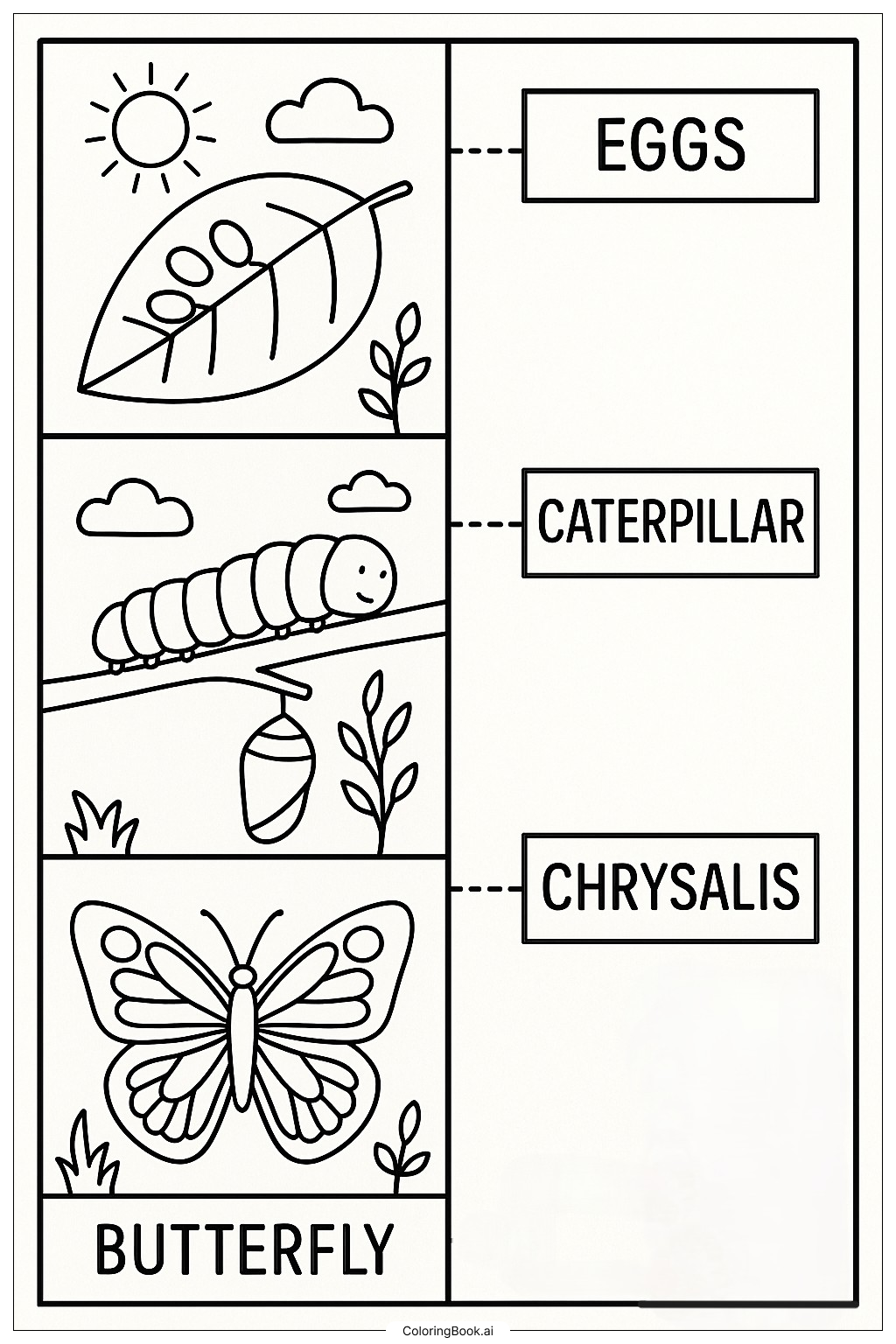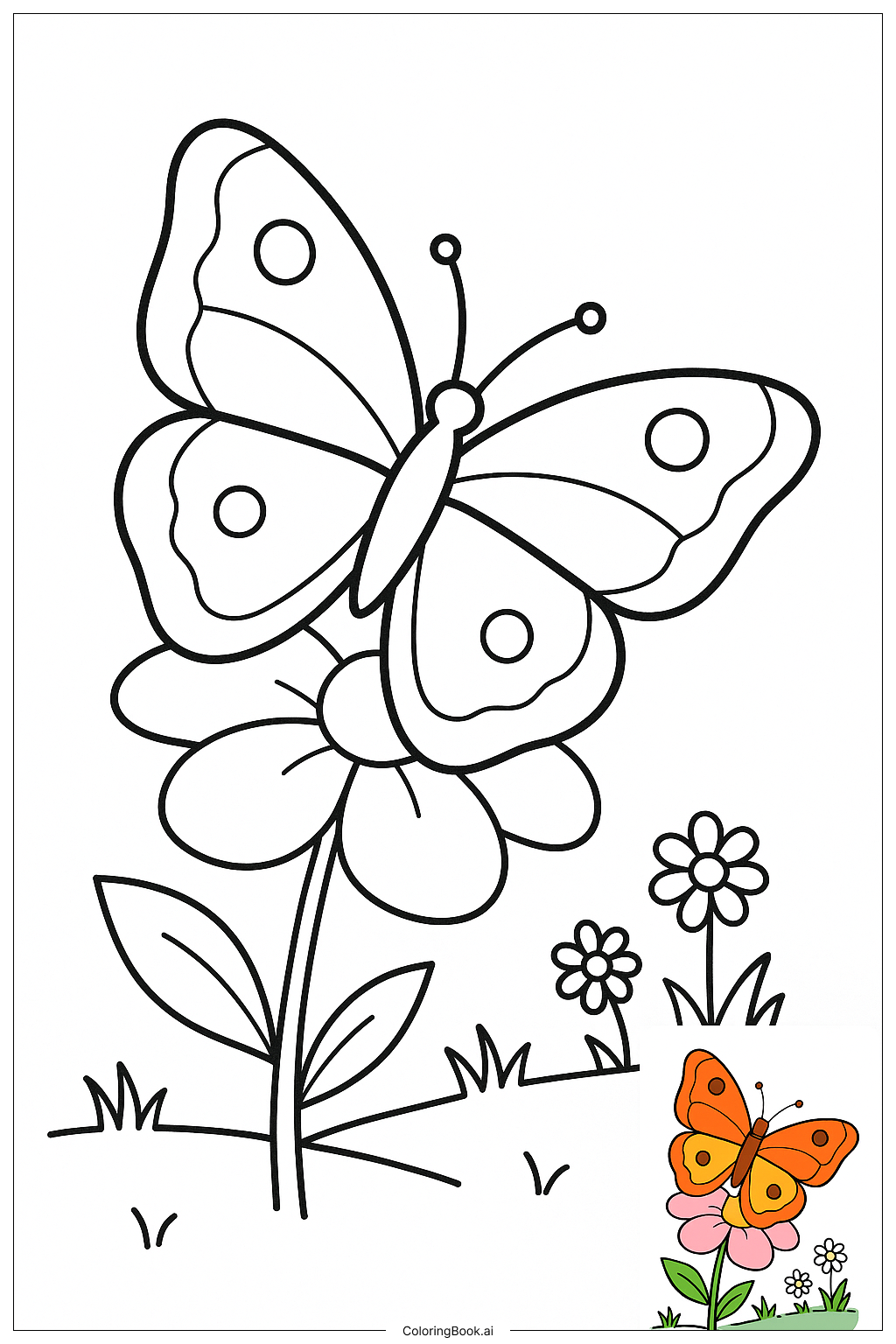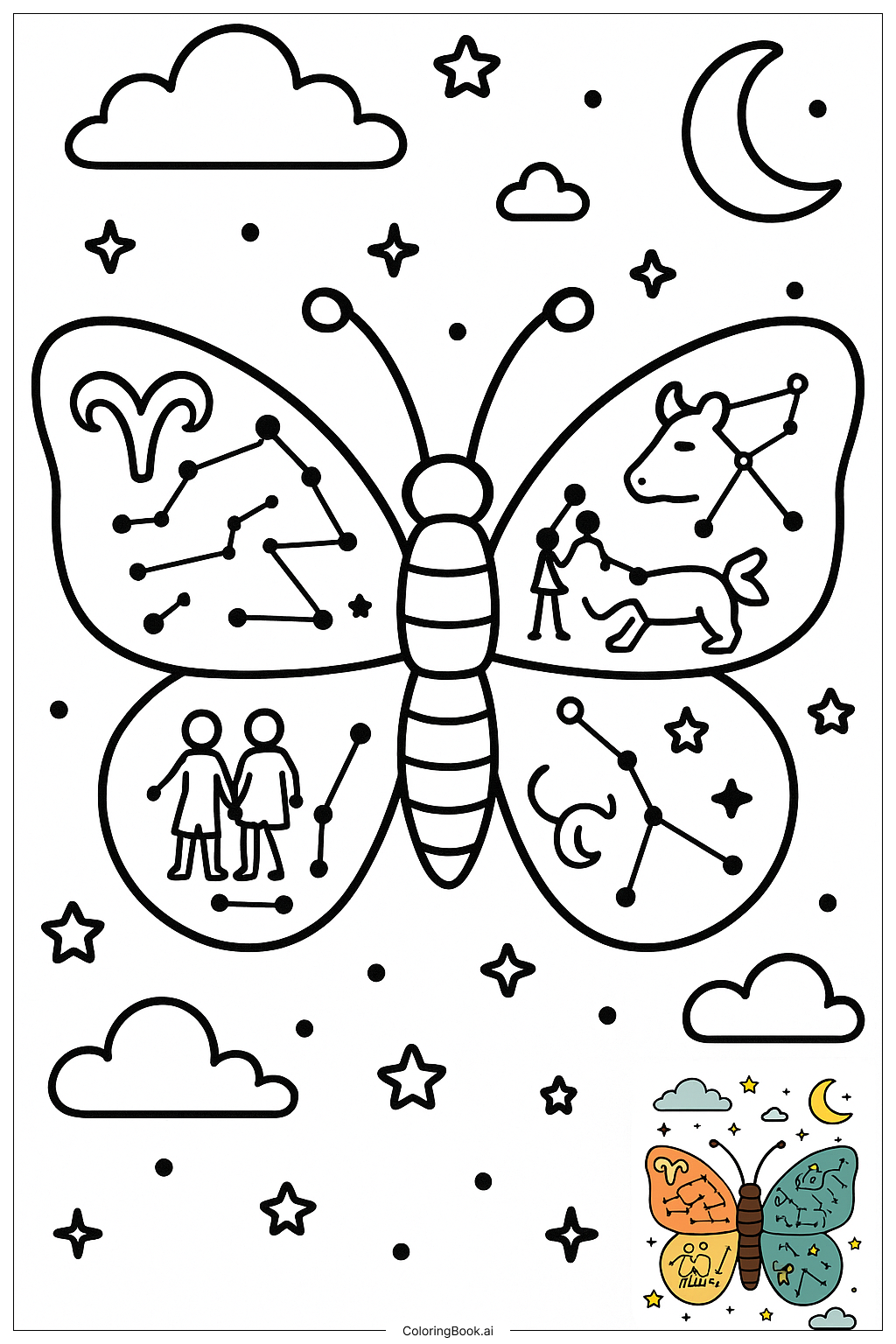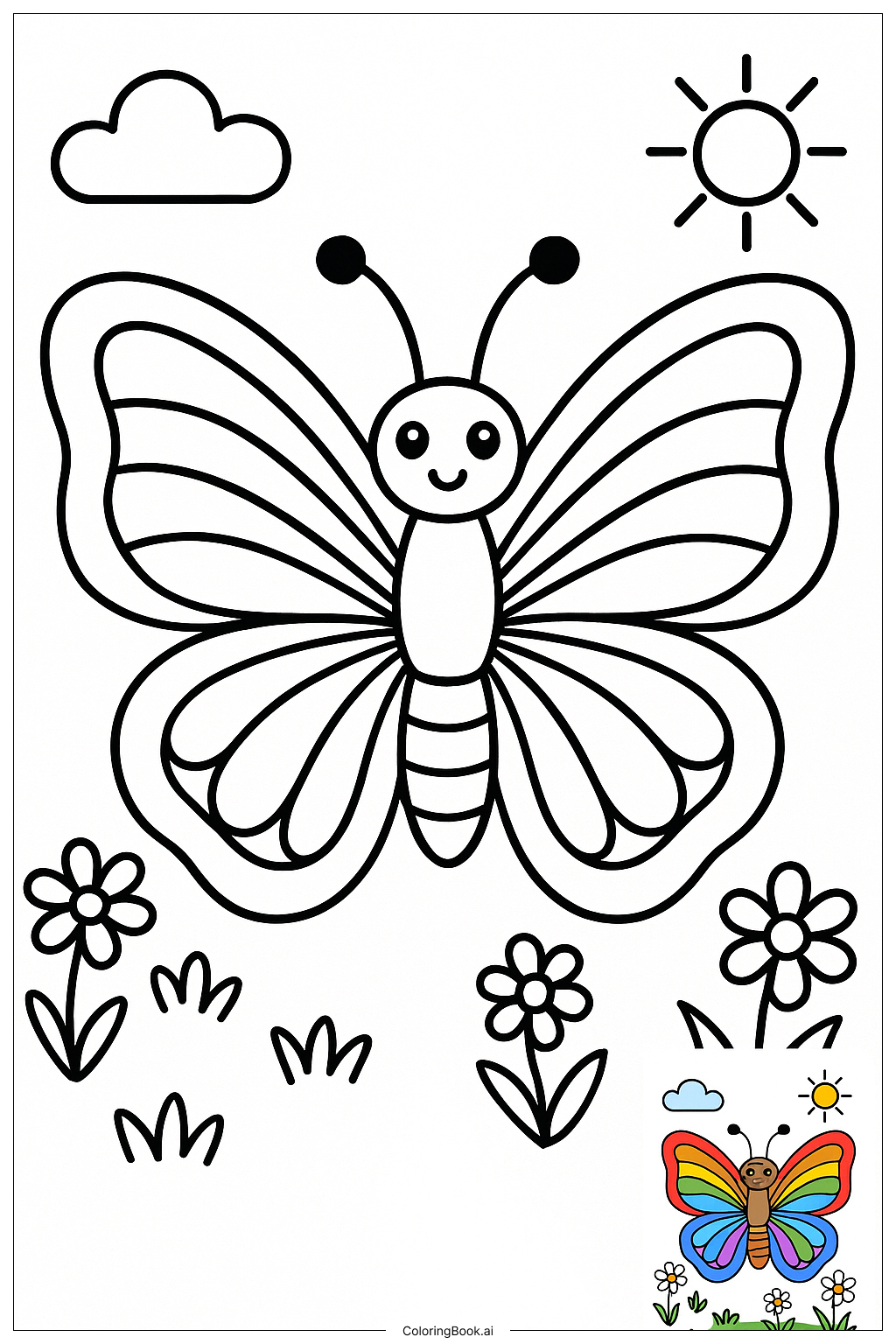Coloring tips: How to color Butterfly Life Cycle Stages Diagram coloring page well?
When coloring this page, think about using bright colors for the butterfly, such as pink, blue, and yellow. You can use green for the leaves and caterpillar to show their natural look. The chrysalis can be a shiny brown or green. For the background, adding blue for the sky and yellow for the sun can make the scene lively. Don’t forget to blend colors to create depth and interest!
Coloring challenges: Which parts are difficult to color and need attention for Butterfly Life Cycle Stages Diagram coloring page?
1. The small details on the butterfly's wings can be tricky. It's important to stay within the lines to keep the colors neat. 2. Choosing the right shades can be difficult. You may want to mix colors to achieve beautiful gradients. 3. The leaves and plants might have different shades of green, which can be confusing. It's helpful to plan the colors in advance. 4. Coloring the chrysalis requires precision since it's a delicate shape. It may take practice to get it just right. 5. Keeping colors balanced across the page can be challenging; you want each part to stand out without clashing.
Benefits of coloring books: Advantages of drawing Butterfly Life Cycle Stages Diagram coloring page
Coloring this butterfly life cycle page is beneficial in many ways. It helps improve fine motor skills as kids practice staying within the lines. Choosing colors encourages creative expression and imagination. Learning about butterfly stages while coloring makes it both fun and educational. It can also improve focus and concentration as children work on their designs. Lastly, coloring can be a relaxing activity that reduces stress, promoting mindfulness.




